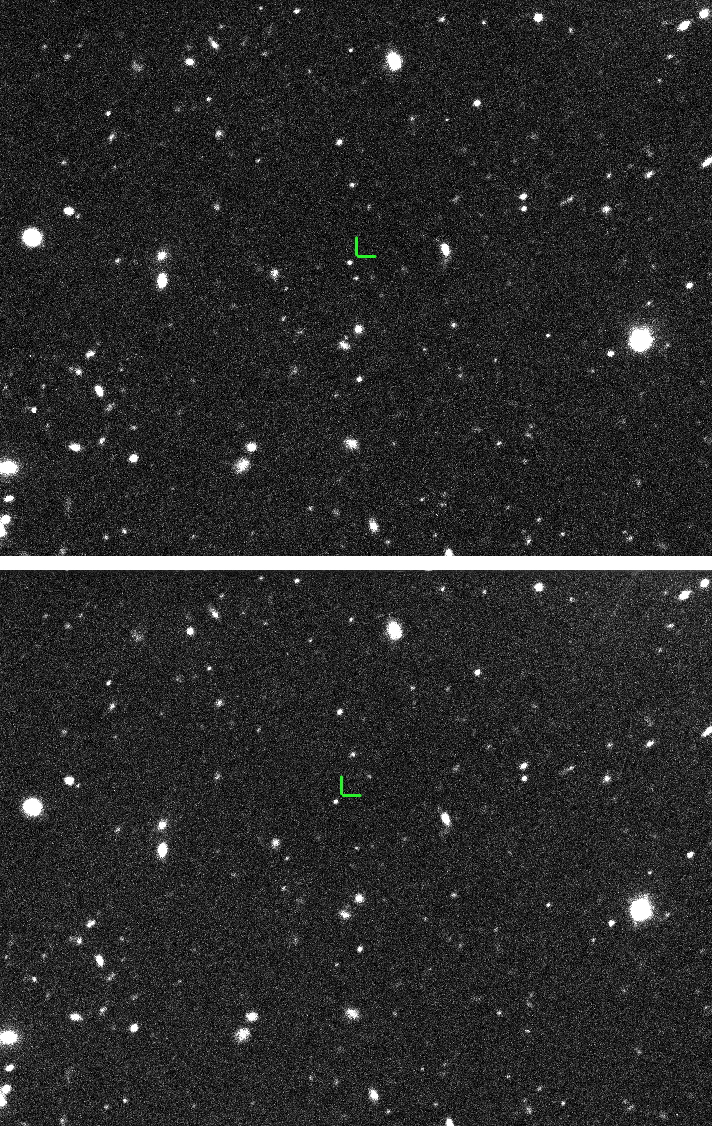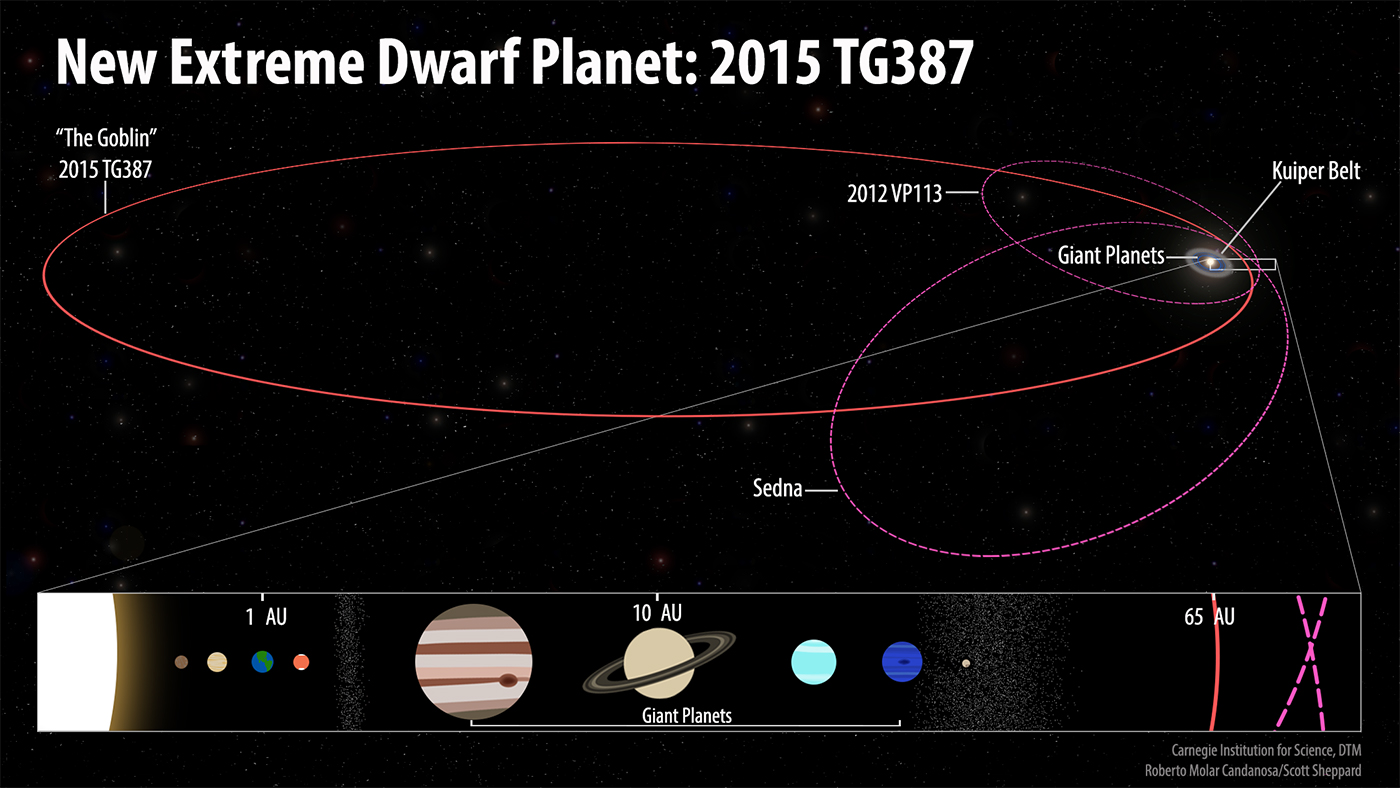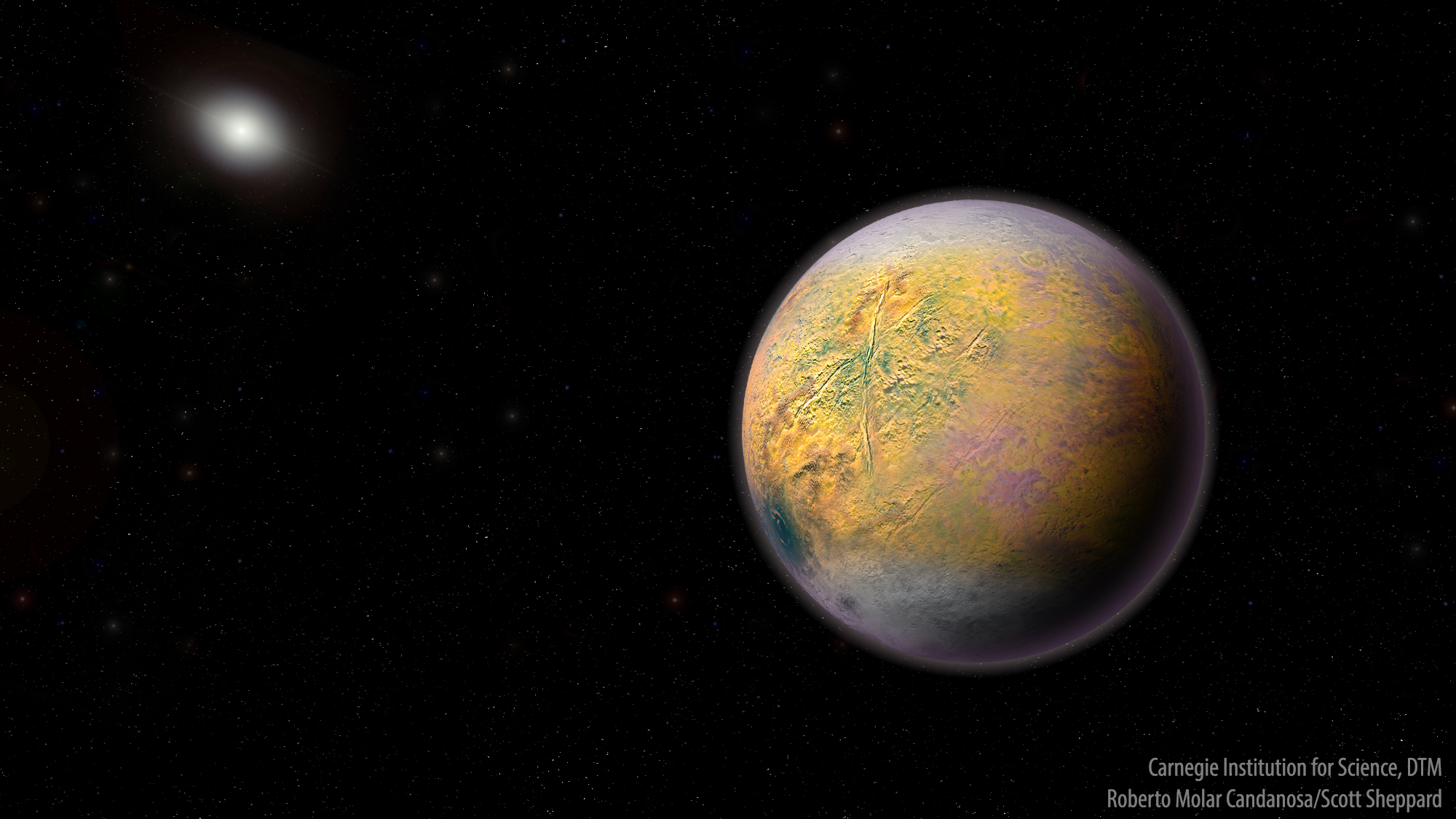Scientists have discovered yet another marker on the trail toward the putative Planet Nine.
That clue is 2015 TG387, a newfound object in the far outer solar system, way beyond Pluto. The orbit of 2015 TG387 shares peculiarities with those of other extremely far-flung bodies, which appear to have been shaped by the gravity of a very large object in that distant, frigid realm — the hypothesized Planet Nine, also known as Planet X.
"These distant objects are like breadcrumbs leading us to Planet X," study leader Scott Sheppard, of the Carnegie Institution for Science in Washington, D.C., said in a statement. [The Evidence for 'Planet Nine' in Our Solar System (Gallery)]
"The more of them we can find, the better we can understand the outer solar system and the possible planet that we think is shaping their orbits — a discovery that would redefine our knowledge of the solar system's evolution," he added.
And 2015 TG387 is special among these bread crumbs, because it was found during a relatively uniform survey of the northern and southern skies rather than a targeted hunt for clustered objects in certain parts of the sky, Sheppard said. Targeted hunts can produce biased results — for example, the appearance of clustering where none may actually exist, he explained.
2015 TG387 has two dwarf-planet companions in the low-bias class, Sheppard said: 2012 VP113, which he and his colleague Chadwick Trujillo (who's a co-author of the new paper as well) spotted in 2014 as part of the same, ongoing long-term survey; and the relatively bright Sedna (because the whole sky has been searched to its level of brightness).
"And then if you bring in some of the other extreme objects — several of them were found in our survey as well," Sheppard told Space.com. "The statistics get better and better that this planet is likely out there."
Get the Space.com Newsletter
Breaking space news, the latest updates on rocket launches, skywatching events and more!

Sheppard and his colleagues first spotted 2015 TG387 in October 2015, using Japan's 26-foot (8 meters) Subaru telescope atop the volcanic peak Mauna Kea in Hawaii. The researchers nicknamed the object "The Goblin," because of the discovery date and the "TG" in the provisional designation.
It took the team three additional years to nail down The Goblin's orbit, which they did with the aid of observations by the Las Campanas Observatory in Chile and the Discovery Channel Telescope in Arizona.
2015 TG387 loops around the sun on an extremely elliptical path, coming within about 65 astronomical units (AU) of the sun at its closest point (known as perihelion) and getting about 2,300 AU away at its most distant (aphelion).
One AU is the average Earth-sun distance — about 93 million miles (150 million kilometers). So 2015 TG387 is way, way out there. Indeed, it takes about 40,000 Earth years for the newfound object to complete one lap around the sun. [Our Solar System: A Photo Tour of the Planets]
Only two known solar system bodies have more-distant perihelia than The Goblin does (2012 VP113 and Sedna), and only one (2014 FE72) has a greater aphelion distance. (For perspective: Pluto never gets closer to the sun than 29.7 AU, or farther away than 49.3 AU.)

Sheppard and his colleagues think 2015 TG387 is about 186 miles (300 km) wide and probably spherical, in which case it would qualify as a dwarf planet. But that's all they can really say about The Goblin's physical characteristics.
"It's pretty faint, so we can really just see that it's there," Sheppard told Space.com. "We don't even know the color of the object; we haven't gotten any spectroscopy on the object yet, or anything like that."
(The 186-mile diameter is not a measurement but rather an estimate, assuming a "moderate" reflectiveness for 2015 TG387.)
But going back to the orbit: The Goblin's is similar in key ways to those of some other extremely distant bodies — particularly in an element called "longitude of perihelion." Basically, the elongated parts of their elliptical orbits are clustered in the same part of the sky, which is consistent with gravitational shepherding by Planet X.
The existence of Planet X was first seriously proposed in 2014 by Sheppard and Trujillo, to potentially explain oddities in the orbits of 2012 VP113, Sedna and a few other trans-Neptunian objects.
In 2016, astronomers Konstantin Batygin and Mike Brown presented more evidence for such an unseen "perturber," which they called Planet Nine. Batygin and Brown have suggested that this world may be about 10 times more massive than Earth and orbit about 600 AU from the sun on average.

In the new study, the researchers also performed computer simulations to test how Planet X's gravitational tug might influence the orbit of The Goblin. They found significant shepherding akin to that inferred for other distant objects — and determined that 2015 TG387's orbit remains stable for the age of the solar system nonetheless.
"What makes this result really interesting is that Planet X seems to affect 2015 TG387 the same way as all the other extremely distant solar system objects," Trujillo, who's based at Northern Arizona University, said in the same statement. "These simulations do not prove that there's another massive planet in our solar system, but they are further evidence that something big could be out there."
Sheppard puts the odds of Planet X's existence at around 85 percent. And he says it's not at all surprising that astronomers haven't spotted it yet.
"Where we think the planet is — hundreds of AU away, if not 1,000 AU — something even as big as Neptune would be fainter than most telescopes could see," Sheppard told Space.com. (In case this sounds odd or incongruous: The Goblin was discovered near perihelion, at about 80 AU from the sun.)
"And most of our surveys to date do not go that faint, do not go that deep. We've covered very little of the sky to the depth that's needed to be covered to find something this faint," he added. "You can hide a very big thing in the outer solar system very easily."
The paper describing the discovery of 2015 TG387 has been submitted to The Astronomical Journal.
Follow Mike Wall on Twitter @michaeldwall and Google+. Follow us @Spacedotcom, Facebook or Google+. Originally published on Space.com.
Join our Space Forums to keep talking space on the latest missions, night sky and more! And if you have a news tip, correction or comment, let us know at: community@space.com.

Michael Wall is a Senior Space Writer with Space.com and joined the team in 2010. He primarily covers exoplanets, spaceflight and military space, but has been known to dabble in the space art beat. His book about the search for alien life, "Out There," was published on Nov. 13, 2018. Before becoming a science writer, Michael worked as a herpetologist and wildlife biologist. He has a Ph.D. in evolutionary biology from the University of Sydney, Australia, a bachelor's degree from the University of Arizona, and a graduate certificate in science writing from the University of California, Santa Cruz. To find out what his latest project is, you can follow Michael on Twitter.









